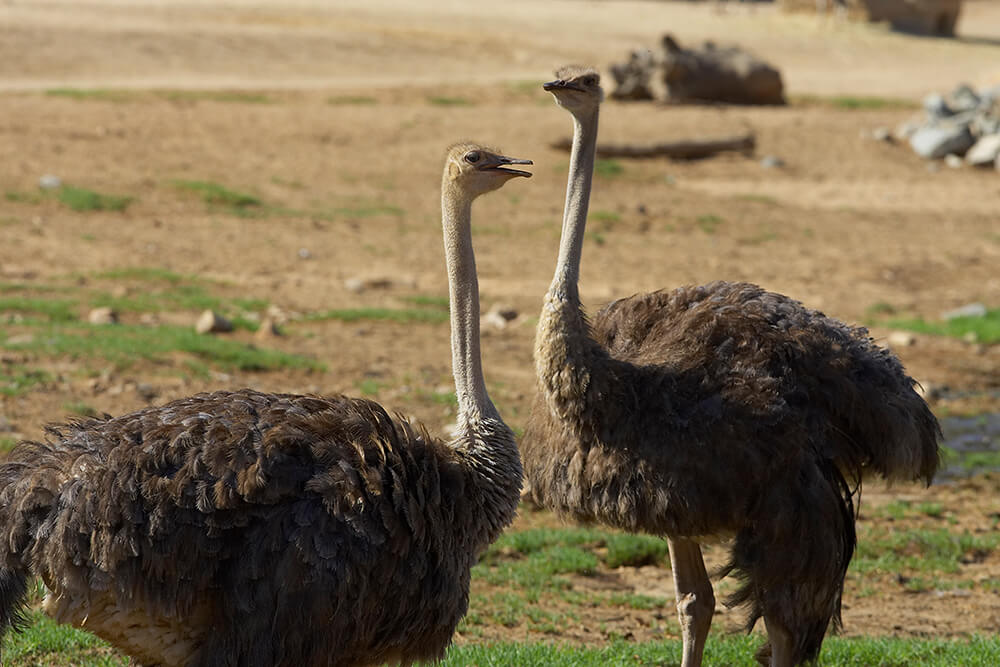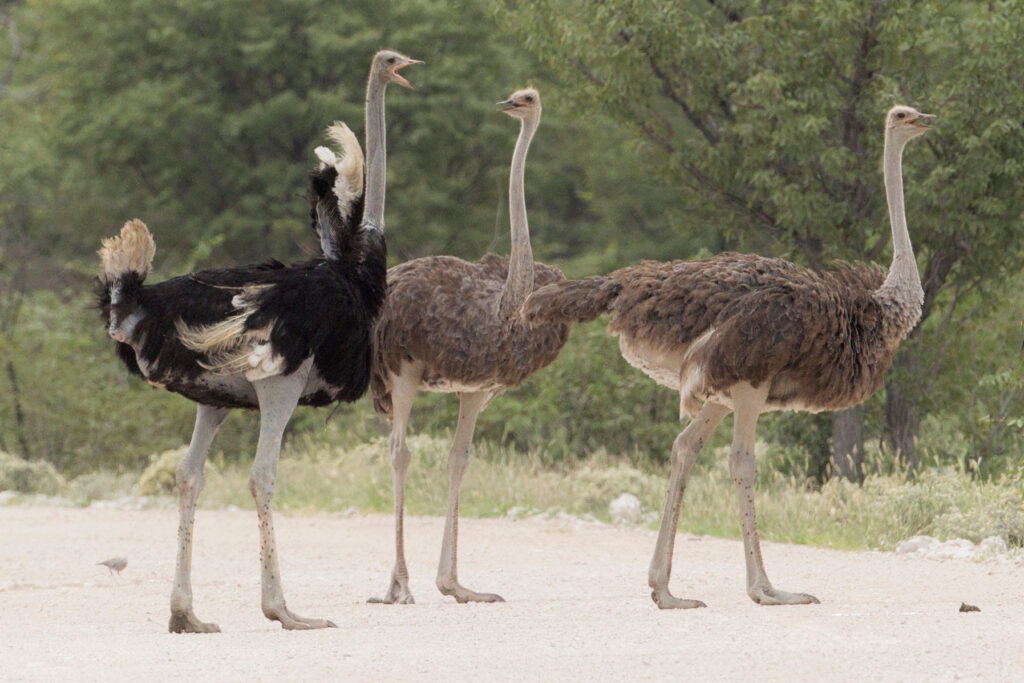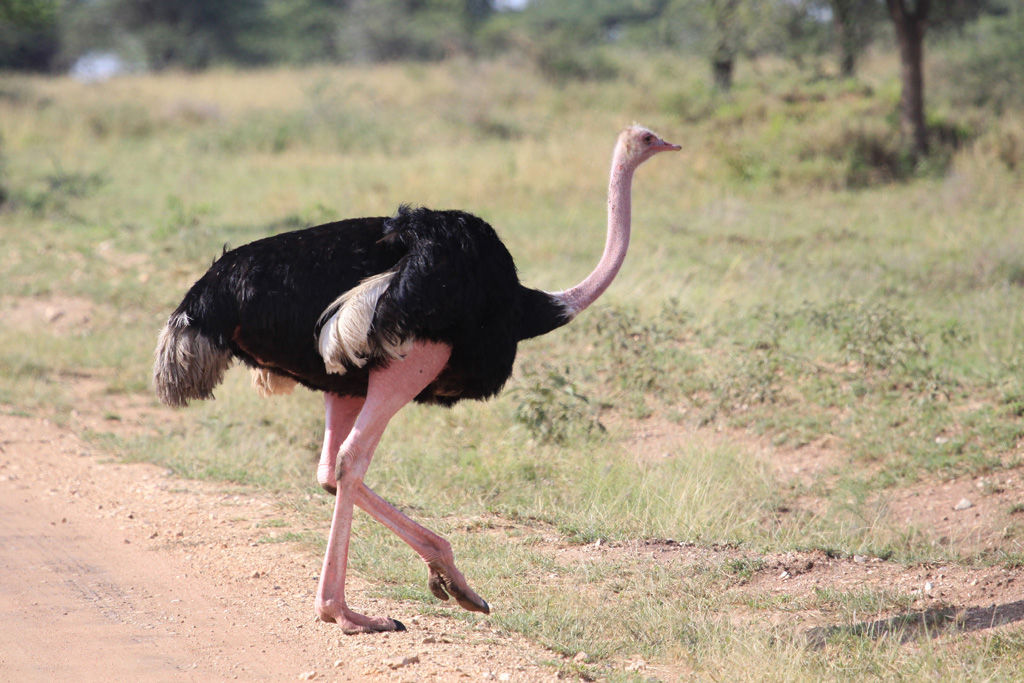Ostrich: World’s Largest And Flightless Bird
Introduction:
The world’s largest bird is the ostrich (Struthio camelus) are flightless bird. Native to Africa, ostriches are known for their impressive size and are flightless birds with long legs and necks. Adult male ostriches can weigh between 220 and 290 pounds (100 to 130 kilograms) and stand over 9 feet (2.7 meters) tall. Female ostriches are generally smaller but still large compared to other bird species. Despite their inability to fly, ostriches are incredibly fast runners and are well-adapted to life in the open grasslands and deserts of Africa.
Species of ostrich:
There is only one living species of ostrich, and that is the Common Ostrich (Struthio camelus). Within the Common Ostrich species, there are multiple subspecies that are found in different regions of Africa.
The subspecies of the Common Ostrich include:
Struthio camelus camelus: This is the North African ostrich, found in countries such as Morocco, Algeria, Tunisia, Chad, and Sudan.
Struthio camelus massaicus: Also known as the Masai ostrich, it is found in East Africa, including Kenya, Tanzania, and Ethiopia.
Struthio camelus australis: This is the South African ostrich, native to countries in Southern Africa, such as Namibia, Botswana, and parts of South Africa.
These subspecies may have slight variations in size, plumage color, and other features based on their geographic locations. The Common Ostrich is well adapted to a variety of environments, including savannas, deserts, and open woodlands.

Taxonomy:
The ostrich, scientifically known as Struthio camelus, belongs to the following taxonomic classification:
- Kingdom: Animalia
- Phylum: Chordata
- Subphylum: Vertebrata
- Class: Aves
- Order: Palaeognathae
- Family: Struthionidae
- Genus: Struthio
- Species: camelus

Habitat of Ostrich:
Ostriches are native to Africa and are well-adapted to a variety of habitats. They are commonly found in open savannas, grasslands, and deserts. Ostriches prefer areas where they have a clear line of sight to detect potential predators. They can thrive in diverse environments, ranging from arid regions to more vegetated landscapes.
Diet of Ostrich:
Ostriches are omnivores, and their diet includes a mix of plants, seeds, insects, and small vertebrates. They are opportunistic feeders and consume whatever is available in their environment. Ostriches are known to eat roots, leaves, flowers, and fruits, and they use their powerful beaks to forage for food. They also ingest pebbles and small stones, which help them grind down their food in the muscular gizzard.
Speed:
The ostrich is known for its remarkable speed and is considered the fastest-running bird. Adult ostriches are capable of reaching speeds up to 72 miles per hour (116 kilometers per hour). Their powerful legs and long strides contribute to their incredible speed, and they use it as a primary means of escaping predators in their natural habitat. Ostriches are well-adapted runners, and their speed is a crucial aspect of their survival strategy.

Weight:
Adult male ostriches can weigh between 220 and 290 pounds (100 to 130 kilograms), while females are generally smaller.
Mating Habits:
Ostriches are polygamous birds (Polygamous birds are species in which individuals form mating relationships with more than one partner during a breeding season or period).
Incubation Period:
Female ostrich can lay between 7 to 10 eggs in a single clutch. However, the exact number can vary, and in some cases, a female ostrich may lay up to 12 to 16 eggs.
Ostriches have a relatively long incubation period of about 42 to 46 days. The female incubates the eggs during the day, and the male takes over at night. Ostrich eggs are the largest of any living bird.

Lifespan:
Ostriches can live for several decades. In captivity, they may reach an age of 40 to 50 years.
Population:
The IUCN Red List considers the common ostrich to be a species of least concern, while the Somali ostrich is potentially vulnerable to extinction. Both species appear to be decreasing slightly in number, and it is estimated that no more than 150,000 ostriches remain in the wild (2023).
Conservation Status and Efforts:
The common ostrich is categorized as “Least Concern” on the IUCN Red List, indicating that it is not currently at a high risk of extinction. However, some local populations may face threats such as habitat loss and hunting.
Conservation efforts for ostriches include habitat protection, monitoring of populations, and measures to address potential threats. Sustainable management practices are essential to ensure the long-term survival of ostrich populations.
